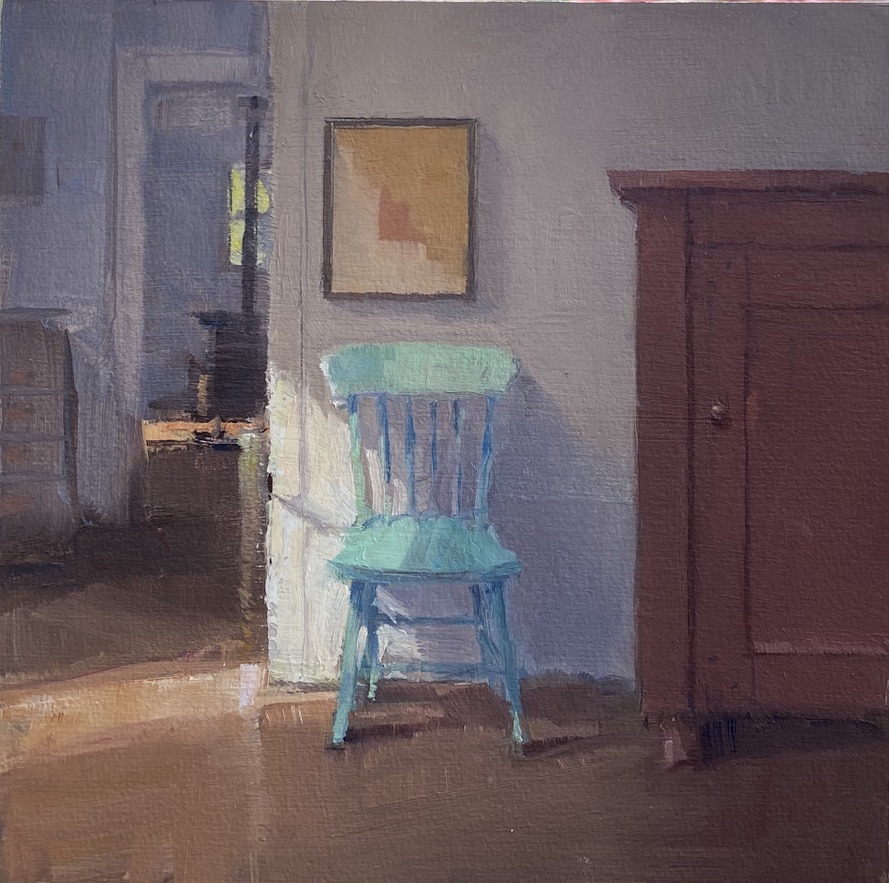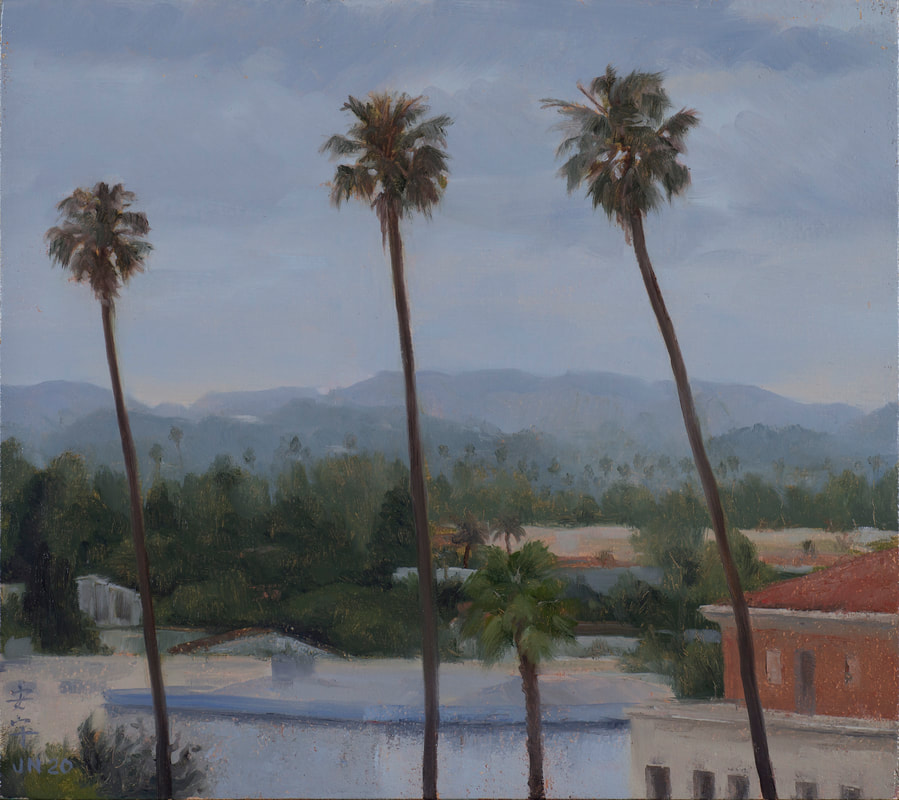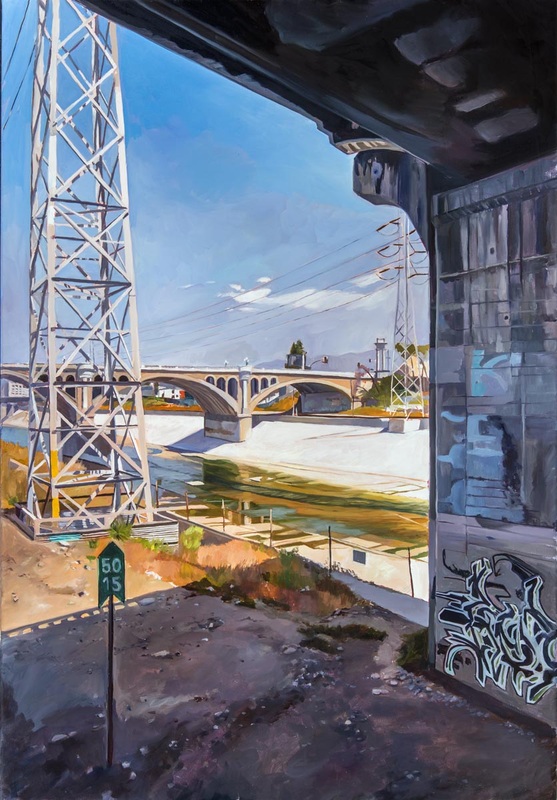Painting is meant to be seen, not talked about. Painters are drawn to things, not concepts or doctrines. What counts is what is front of them, the very thing itself—whether an object or a vista—not an idea about the thing. For a painter, the only ideas that count are pictorial ones. Matters of fact are primary. These include the material facts of paint, the cookery of getting it right, manipulation of brushes and color chords—all physical, earth-bound matters. Fairfield Porter was blunt: “An art that finds ideas more real than things is attractive to the unemployed intellectual.”
• • • • •
One thing that does need saying cannot be said often enough: contemporary art is simply the art of one’s contemporaries. Lovely contemporary painting still exists. You have only to look for it. At a time of relentlessly expanding mutations of the definition of art, there is a solace in finding it. Some comfort comes from encountering painters who care about the work of their hands ahead of their status as free radicals in a field of unchecked possibilities.


When people say that they do not like contemporary art, most often they mean only that they dislike a certain style. It is an aggressive stylelessness that does not give a fig what you think of it. It is a vehicle for self-declaration by artists—frequently with MFAs—who are free to invent their own standards and technical means. Some of us dub it “contemporary Contemporary” to distinguish it from all else made by our contemporaries. For a pitch-perfect specimen of the genre, Tracy Emin’s “My Bed” races to mind.

The designation Contemporary as a trademark is very much the legacy of Charles Saatchi, the British advertising mogul, and promoter of the grotesqueries—e.g. Emin’s bed—that he himself collected. A publicity genie, he had the wherewithal to brand and elevate the stuff of his own collection. He called it “The Art of Our Time,” a characterization that changed both collecting history and the work of artists on the make. Painters attentive to their antecedents and who worked from observation were judged not of our time. Outdated. Passé. Response to beauty in visual reality, the pursuit of some small grace even in unlikely subjects, became yesterday’s quest. Today’s post-Saachi scramble is for whatever can one-up the stains on Emin’s sheets.
• • • • •
Below is a sampler of images of paintings by several contemporary artists who flourish off the Contemporary trade routes. Keep in mind that work viewed on a screen is only a half-measure. Painting cannot be grasped for what it is unless it is seen in the flesh. You can see subject matter on a screen; you can gain a sense of color. But the essence of it—the thingness—only becomes a presence when it is greeted in person. Now that this year’s COVID imprisonment is over, we can get back to the pleasure of gallery-going.



Out of the Saatchi era, from the late ’80s through the ’90s, came two art worlds. One is the self-selected, circular nexus of galleries, press outlets, and institutions—museums, auctions houses, academic art departments—that celebrate a $12 million stuffed shark or the latest banality to receive an award at a Whitney Biennial. With rare exceptions, it is a creature of publicity. The mystification of vulgarity grants it cachet. And resale value. (Emin’s bed, purchased by Charles Saatchi for £150,000, brought £2.5 million auctioned at Christie’s in 2014.)
Then there is that other art world in which serious, working professionals share love of craft and pictorial traditions. They measure themselves, and each other, in conversation with centuries of achievements larger than the trends of the moment. Out of that conversation comes a certain humility. [Gabriel Laderman, a painter, polemicist, and sought-after teacher, never tired of reminding his students: “Don’t be afraid to know who your betters are.”]

Happily, a spirited derrière garde continues to honor protocols of practice—the making of things—over theories. Handiwork and love of materials still count ahead of academically induced concepts about it. Some are “tight” painters; some are “loose.” All are committed to using the physical stuff of art to create something intelligent that pleases eye and mind. Attention to light and atmosphere, respect for line and disegno—the architecture of an image—are painting’s primary obligations. These alone are the intellectual elements of visual art. And they are subordinate to sensibility—an indefinable quality of mind and soul that owes nothing to discursive argument. These are artists, grounded in the longue durée, on whom the depth and breadth of the visual world keeps its hold.





• • • • •
Collage has been at the very heart of modern art since 26-year old Pablo Picasso painted over a label from a Parisian department store—”Magasines du Louvre”—on a piece of brown cardboard. That was 1908. He drew on the cardboard without gluing anything, so the improvisation was not technically a papier collé. Nevertheless, the biography of collage begins with that fragment. In a line of descent from cubism, it is modernism’s most fruitful gift.
In the right hands, collage is painting by other means:


• • • • •
Most collagists work abstractly, building an image in response to different paper surfaces rather than responding to a scene that presents itself in view. It would be unfair to leave abstraction out of this impromptu gallery walk. The texture, color, and movement of collage materials do not mimic painting; they parallel it. Tea papers, rice and rag papers, bits of cloth remnants, and fragile discards take their place as elements in a palette. Sensuous surfaces of weathered scraps greet the eye as painterly gestures, intimate in scale.
• • • • •
There are gradgrinds who insist that abstraction is not really art. Do not believe them. They are cranks. To dismiss abstract art because it offers no recognizable subject matter is much like dismissing music unaccompanied by lyrics. Or being unable to respond to an aria without a libretto. The eye is an organ of the brain. It has its own way of knowing. And one thing it knows is that aesthetic satisfaction does not require subject matter. That is because the aesthetic dimension of an art work does not lie in a theme or topic.
You might not like abstraction. But disfavor does not deny its legitimacy as art.
• • • • •
One contemporary collagist whose subtle, delicate works deserve to be better known is Irwin Kremen, a former psychology professor at Duke. He died early last year. I miss his work.

Note: Ruth Miller, Daniel Dallmann, and Philip Jackson exhibit with Zeuxis, a still life collective. The Kremen collage is held by Klaus von Nichtssagend. Other paintings on this page are represented by George Billis Gallery.


